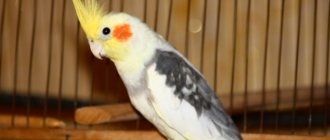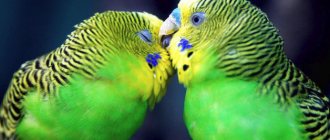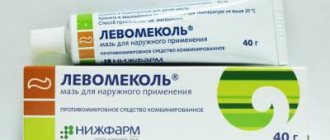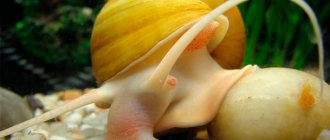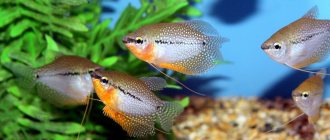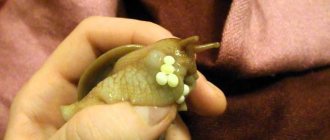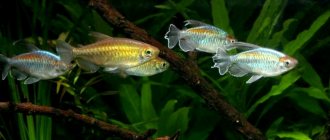One of the most famous species of ornamental birds is budgerigars. They have a pleasant bright color and are very sociable. If you are planning to get this bird, first of all, ask how to properly feed a budgie. This is important because good nutrition is the basis for a healthy and long life for poultry. And this is the most important problem for all lovers of winged pets, because it is very easy to make a fatal mistake. Therefore, before purchasing such a parrot, carefully study all the information before purchasing the bird.
Grain mixture – ready
Stores offer a variety of ready-made mixtures; they can improve the feeding of your parrot and greatly facilitate the daily care of your pet. Each package of ready-made grain mixtures must contain canary seed, millet, raw sunflower seeds (not roasted), and different varieties of oats. In different brands of food, the quantity and types of other brands are different. The main task of the bird owner is to choose and purchase the right food that the budgerigar will love. After all, when a pair of birds lives in the same cage, you can watch how the male feeds his female with the tastiest pieces. There are several nuances that need to be taken into account when purchasing a ready-made grain mixture:
- Garbage, unpleasant odor, mold, and dirt are not allowed in finished food. For each package, it is imperative to check the expiration date and integrity of the box itself;
- The most preferred mixtures are ready-made mixtures in sealed containers, which are always stored without access to oxygen. Insects and rotten seeds are much less likely to be found in them;
- It is necessary to feed your budgie only after it has eaten its entire previous portion of food. Under no circumstances should the male choose the most delicious ingredients for himself and leave the rest to the chicks. For medium-sized birds, regular daily feeding is one or two tablespoons of ready-made mixture;
- The daily diet of budgerigars should be at least half millet.
Choosing the right food does not take much time. You need to purchase those ready-made mixtures that your feathered pet eats with appetite. Caring for your pet will make you happy if feeding becomes not only tasty, but also healthy.
Cornbread
And one more, third mixture. Twice a week I give the birds cornbread. I use the standard cornbread recipe. At the same time, I buy corn for him (uncrushed) only at a health food store, as well as whole grain flour. You can add any number of ingredients to this mixture, including grated vegetables and fruits, sesame seeds, pumpkin seeds, raw sunflower seeds, creamed corn, grated low-fat cheese, green chili pieces, etc. There is no limit to the number of products that can be added to the main ingredients of the mixture. Thereby introducing even more variety into your parrot’s diet.
Vegetables
Any fresh vegetables can be considered a storehouse of valuable substances and vitamins. But before you feed your pet a piece of bright and juicy carrots, you should make sure that they are washed well. It’s great if the root vegetables come from your own garden, which has not been treated with any chemicals. A balanced and daily diet for a young budgie may include several vegetables:
- Turnips, beets, and carrots will definitely please your bird. Root vegetables should be finely grated and served mixed with egg yolk or crackers. Only the male should be fed boiled eggs. Carrots can be given in unlimited quantities, exactly as much as your bird eats;
- Squash, pumpkin, melon, and zucchini are essential sources of carbohydrates and fiber. The seeds are especially very useful; they contain many useful vitamins. Large seeds are first crushed so that the budgie does not choke. You can also feed the bird with watermelon, but it does not have any nutritional value, and on some birds the pulp of the watermelon has a laxative effect;
- Cucumbers and tomatoes with all their seeds are served fresh. Tomatoes must be ripe, since green tomatoes contain a huge amount of toxic substances;
- Green peas, corn and beans. In dairy or in the initial stages of maturation, they can be fed to chicks and female budgerigars. These grains are very soft and contain a huge amount of useful and necessary substances. But you need to be a little careful with peas, since in large quantities they can cause severe digestive upset;
- White cabbage can supply the parrot's body with necessary and important microelements. The bird can be fed both the stalk and the leaves; for convenience it should be chopped;
- Various varieties of lettuce and spinach are given only in fresh and small portions; a correctly chosen portion will not disrupt the functioning of your bird’s intestines;
- Sweet bell pepper. It is very rich in microelements and vitamins. Bell peppers contain several times more vitamin C than even citrus fruits;
Feeding your budgie vegetables can be fraught with danger. There are vegetables that are strictly forbidden to give to a budgie:
- Radish, radish, as it has a very pungent taste;
- Eggplant, as it contains substances harmful to the parrot;
- Onion and garlic.
Fruits
Proper care of budgies must include feeding your pet fresh fruit every day. The homeland of this bird species is considered to be Australian forests, and they are known to be very rich in ripe and juicy fruits of various fruits. You can feed your budgie the following fruits:
- Pears and apples. Well-washed, ripe, and fresh fruits can be fed to the chicks and the female all year round. But the male will in no case refuse such a delicacy;
- Tangerines and oranges. They must be given correctly, cut into small pieces, and peeled;
- Grapes, the norm for a budgie is one grape every two days;
- Bananas. A ripe and tasty fruit is considered a real delicacy for a parrot. In addition to taste, it supplies the parrot with starch and sugar. Since bananas spoil quickly, it is recommended to give them without the peel and in small portions. As soon as your feathered friend is satisfied, the remaining treats are removed from his feeder;
- Sweet cherries, plums and cherries;
- Peaches and apricots;
- Various berries. Strawberries, blueberries, rose hips, rowan and other delicious berries can be given not only fresh, but also dried. Budgerigars eat them with great pleasure;
- Pomegranate seeds;
- Peeled kiwi;
- Pineapples, but in small quantities.
It is strictly forbidden to feed your budgie persimmon, avocado, papaya and mango - all these fruits are very dangerous to the health of your feathered pet. Also, do not overuse nuts. In the wild, parrots eat them with pleasure, but domestic birds lead a completely different lifestyle, and such an amount of fat can destroy them. You can treat budgies with nuts, but not very often, as the bird may become obese.
House plants
On our windowsills there can easily be plants that are very dangerous for parrots. Therefore, you will have to either get rid of such flowers or somehow isolate them so that a curious bird does not try to taste them.
Crassula (a popular money tree), tradescantia, bamboo, roses, aloe, hibiscus, reo, chrysanthemums, indoor palms.
Dieffenbachia, snowdrops, foxglove, ranunculus, arum, chlorophytum, heather, azalea, rhododendron, tobacco, fern. These plants are simply dangerous to your pet's life.
Grass
Fresh grass is considered one of the most valuable and healthy foods that you can feed your budgie. Greens should be present in the feeders every day and, if possible, be freshly picked. A few tips;
- You can’t pick up armfuls of grass in your yard. Because among the picked plants there may be poisonous ones;
- It is recommended to rinse any weed thoroughly. You probably won’t go outside the city limits to pick fresh and clean grass for your pet. In populated areas, leaves and grass are always covered with harmful toxic fumes;
- In autumn, you should refrain from collecting leaves and some herbs. Because closer to winter, plants already begin to accumulate various harmful toxins. At this time of year, it is recommended to feed your budgie with seeds of various cereals;
- Ears and grass do not need to be chopped. They should be collected in small bunches and hung in a cage. Parrots love to get their own seeds.
You must be very careful when collecting herbs. The following plants are considered beneficial:
- Plantain with seeds;
- Dandelion, seeds, leaves, branches are edible;
- Bird knotweed;
- woodlouse;
- Any clover;
- Blooming Sally;
- Hedgehog grass, wheatgrass, timothy, foxtail are weeds, they are always found in the garden or at the dacha;
- Mantle, string - are considered medicinal plants, have a lot of useful properties;
- Nettle. Budgerigars happily peck young leaves and seeds, but the plant must first be scalded with boiling water.
Some feed pet budgies with leaves of indoor plants; such food may be appropriate in winter, when the feathered pet’s menu is not rich in variety.
It is strictly forbidden to give the bird strong-smelling plants and spices, no matter how appetizing they may seem in appearance. Not recommended, dill, parsley and cilantro.
By time of year
A parrot's diet also depends on the season. At different times of the year, the composition of the feed should be changed. However, grain food must always be present in the cage.
Winter diet
In winter, the bird should be fed according to a seven-day dietary pattern:
- On the first day - soft food, steamed corn and oats.
- On the second day, dried nettle is mixed with the grain. The bird is given sprouts of oats and sprouted grain.
- The third day is a bun soaked in sweet tea.
- Fourth day – apples, soft food and pine flour.
- On the fifth day, flour from pine needles or grass, oat sprouts, chopped nuts, grated carrots, peas and millet are added to the main feed.
- Day six – grated beets, grass meal and soft food.
- Day seven – bananas and sprouted oats.
Spring diet
In spring, the feeding of the parrot does not change much. As before, the basis is a grain mixture, which is supplemented with soft food, millet, oats, grated beets, pine and grass flour, carrots, corn and nuts. The only difference is the addition of cottage cheese, rosehip decoction, herbs and citrus slices.
Summer diet
In summer, the seven-day diet changes significantly. Although grain feed is still the main one.
Feeding scheme:
- On the first day, they give cottage cheese, clover and dandelion leaves.
- Second day - lettuce leaves and soft food.
- Third day - dandelion leaves, tomato or cucumber pieces.
- On the fourth day, the bird can be treated to an apple and unripe dandelion spikelets.
- Fifth day - soft food, spinach, dandelion leaves, white bread croutons.
- On the sixth day, grated carrots with nuts, dandelion or wood lice leaves are added to the diet.
- Seventh day - lettuce or cabbage leaves, pieces of pear and berries.
Autumn diet
Practically no different from the summer diet. Only once every 2 weeks can a feathered pet be given spruce needles. Grapes and rowan are also added to the diet.
Buds and twigs
The most favorite activity in the world for budgerigars is gnawing on something. Most often these are perches, cage bars, corners of wooden furniture, and wires. But it’s much healthier and more enjoyable to gnaw on fresh tree branches. Birds love to peck the buds and soft bark of twigs. And again, it is not recommended to cut off branches near the roadway. It is best to go for them out of town or to the park. Before giving the treat to your feathered pet, you should soak it in cold water for a couple of hours. Then they are washed and doused with boiling water. These strict precautions will not only protect the parrot from dirt and dust, but will also save it from the causative agent of any infection. Because on absolutely any branch there could be some wild sick bird. Do not use detergent or soap for washing. Since the active substances are absorbed into the surface of the bark, and then they are not washed out at all. This is very dangerous for the health of the bird. You can give your parrot branches of deciduous trees: aspen, linden, rowan, maple, alder, viburnum, birch, cherry, apple tree, berry and fruit bushes. It is strictly forbidden to give your budgie coniferous trees, as they contain a lot of resin; it is also prohibited to give oak, lilac, poplar, bird cherry, etc.
Porridge for budgies
Daily preparation of tasty and varied porridges is good and proper care for your budgie. If budgies are accustomed to such tasty food from childhood, then in the future they will happily peck corn, wheat, buckwheat, rice, oatmeal and any other porridge. It is not recommended to use milk, butter, salt, sugar and other additives. The dish should consist only of water and cereal. Salt is generally deadly for budgies.
As for cooking porridge, you should not boil the cereal persistently and for a long time. It is enough just to pour boiling water over it and let it stand in the water for several hours. If you can’t wait, you can cook the porridge until half cooked. The porridge that humans are accustomed to is unsuitable for feeding parrots. Since lumps of porridge will create discomfort by getting stuck in the beak. In order to significantly improve the taste, chopped fruits or herbs are added to the porridge. There is another option. During the day, several different types of cereals are prepared, mixed to create a treat, divided into portions and frozen. And every day you can take a new portion of food out of the refrigerator, add fresh chopped fruits or vegetables to it... but it is better to defrost the food naturally. When defrosted in a microwave oven, the porridge will lose its crispness.

